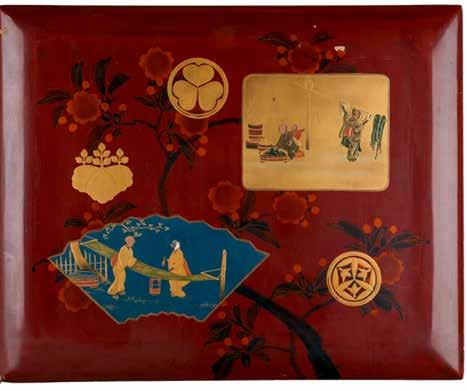The globalised samurai
Adam Clulow
In my classes focused on the samurai, I often show students this beautiful suit of samurai armour, which was crafted at the end of the seventeenth century. The armour seems to fit perfectly with many assumptions about Japan and the samurai: that Japan was a place of age-old traditions; that it was a closed-off system, isolated from the world; and that the samurai were near-legendary warriors who lived only for combat. In fact, this suit of armour challenges all of these notions. After a century of almost uninterrupted peace, it was crafted in 1699 by Myōchin Munesuke for a samurai, probably a very wealthy one, who never saw combat. The battle of Sekigahara in 1600 established Tokugawa control over the archipelago, and in the decades after this, successive Tokugawa shogun set about preventing the possibility of renewed conflict by establishing an elaborate system of control, one in which the samurai were transformed from a violent and poorly defined class of warriors into a rigidly regulated group of bureaucrats. This suit of armour was never intended for war – because there was no war in Japan in this period. But equally interesting, this armour was not a uniquely Japanese object drawn from deeply held traditions; rather, it stood as the end product of a globalised supply chain, which stretched thousands of miles to Southeast Asia. Beginning in the seventeenth century, and as the post-Sekigahara Japanese economy started to boom, Japan imported a wide range of goods into ports such as Nagasaki. The most famous of these goods was silk, which was produced in China but was in constant demand in sprawling cities like Edo. Less well known is that Japan also imported hundreds of thousands of deerskins each year from Cambodia, Ayutthaya (modern-day Thailand) and Taiwan, which was first controlled by the Dutch East India Company and later by the Zheng maritime organisation. In Japan, deerskin was prized for its use in armour: it was softer, could be more easily shaped and could be decorated with elaborate designs and gorgeous colours. The Florentine merchant, Francesco Carletti, who sailed around the world in this period, wrote that the Japanese: obtain very large numbers of buckskins, which they call sichino cava, and which they prepare in a curious manner, cunningly painting on them with various designs diverse pictures of animals, and other things. And they do this with the smoke from rice straw, which colors the entire skin except the part which has been covered with the form of the pictures, which remain impressed and delineated on the white unsmoked part of the skin.1 48
Myōchin Munesuke, Japan, 1643–1735, Samurai armour (gusoku) with breastplate depicting Fudō myōō and inscribed ‘A fortuitous day, the 8th month of the 12th year of Genroku (1699), Myōchin Munesuke’, c.1699, Edo, iron, gilded, silvered and patinated copper, gold leaf, wood, silk, cotton, leather, animal fur, 170.0 cm (height); Gift of M.J.M. Carter AO, Susan Cocks, John Crosby, Dr Peter Dobson, Sandra Dobson, Frances Gerard, Arata Gwinnett, Sam Hill Smith, Shane Le Plastrier, Mark Livesey QC, Joan Lyons, Dr Leo Mahar, Skye McGregor, Diana McLaurin, John Thornton, Zena Winser and David C. Urry through the Art Gallery of South Australia Foundation Collectors Club 2016 1 Francesco Carletti, My voyage around the world, translated by Herbert Weinstock, Pantheon Books, New York, 1964, pp. 130–2.

















